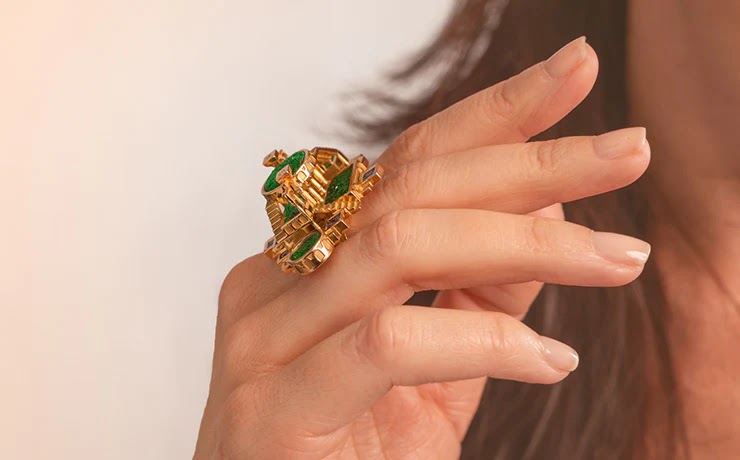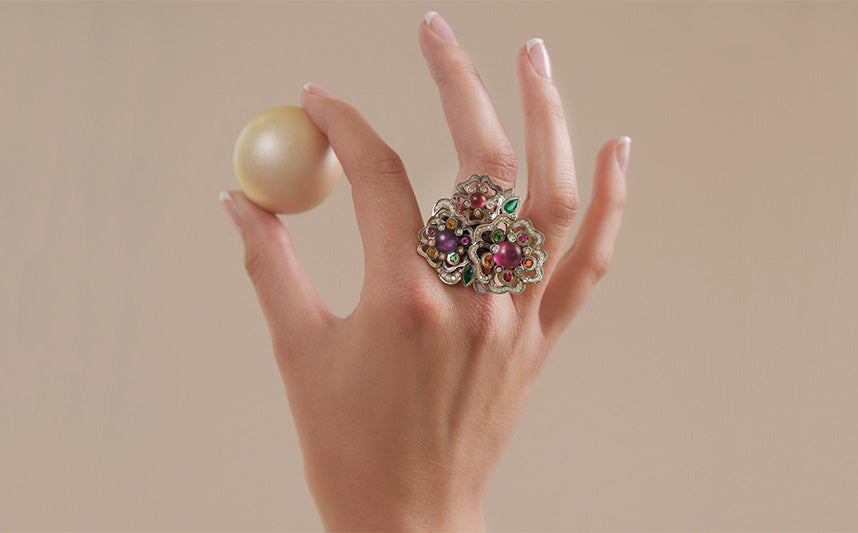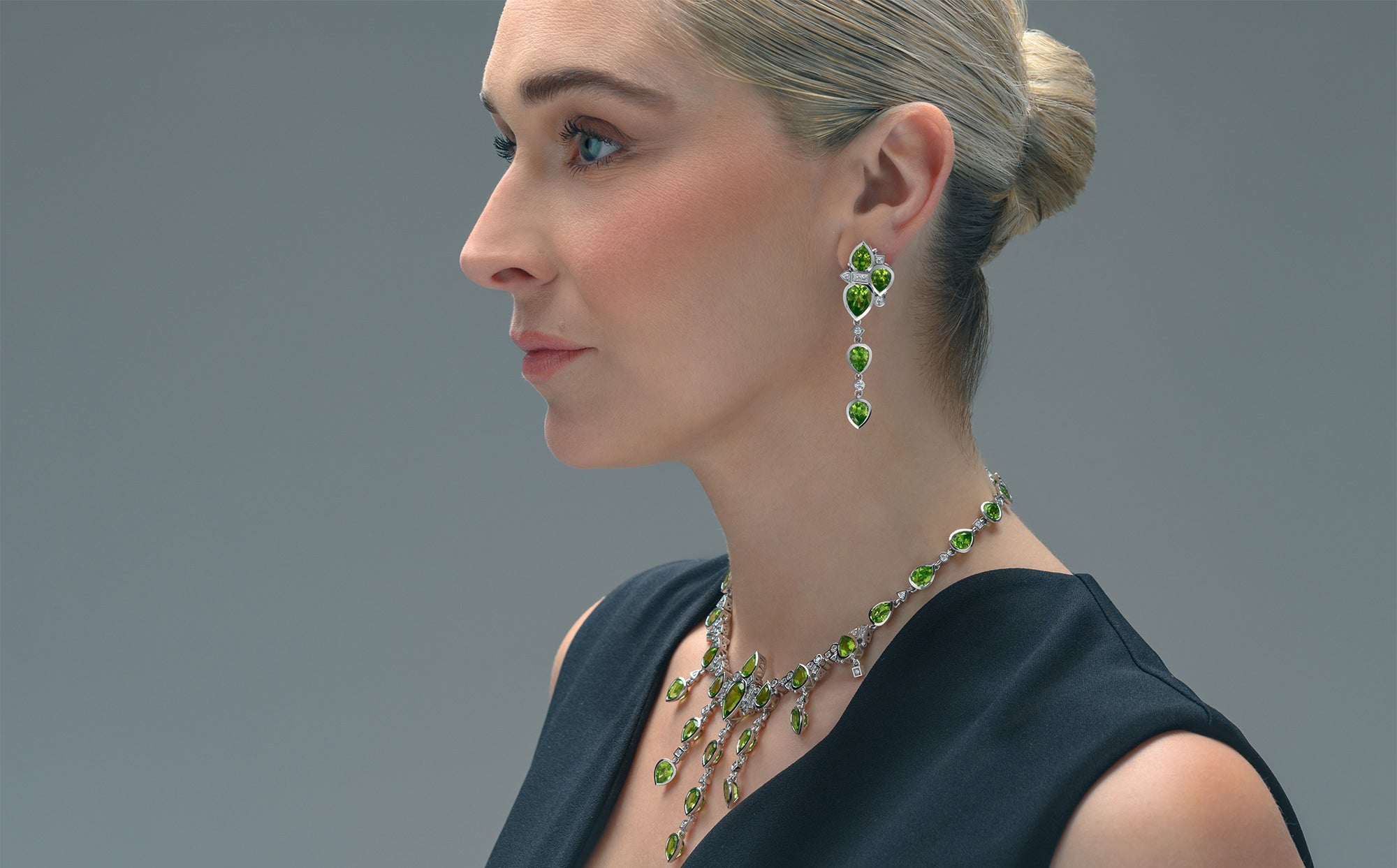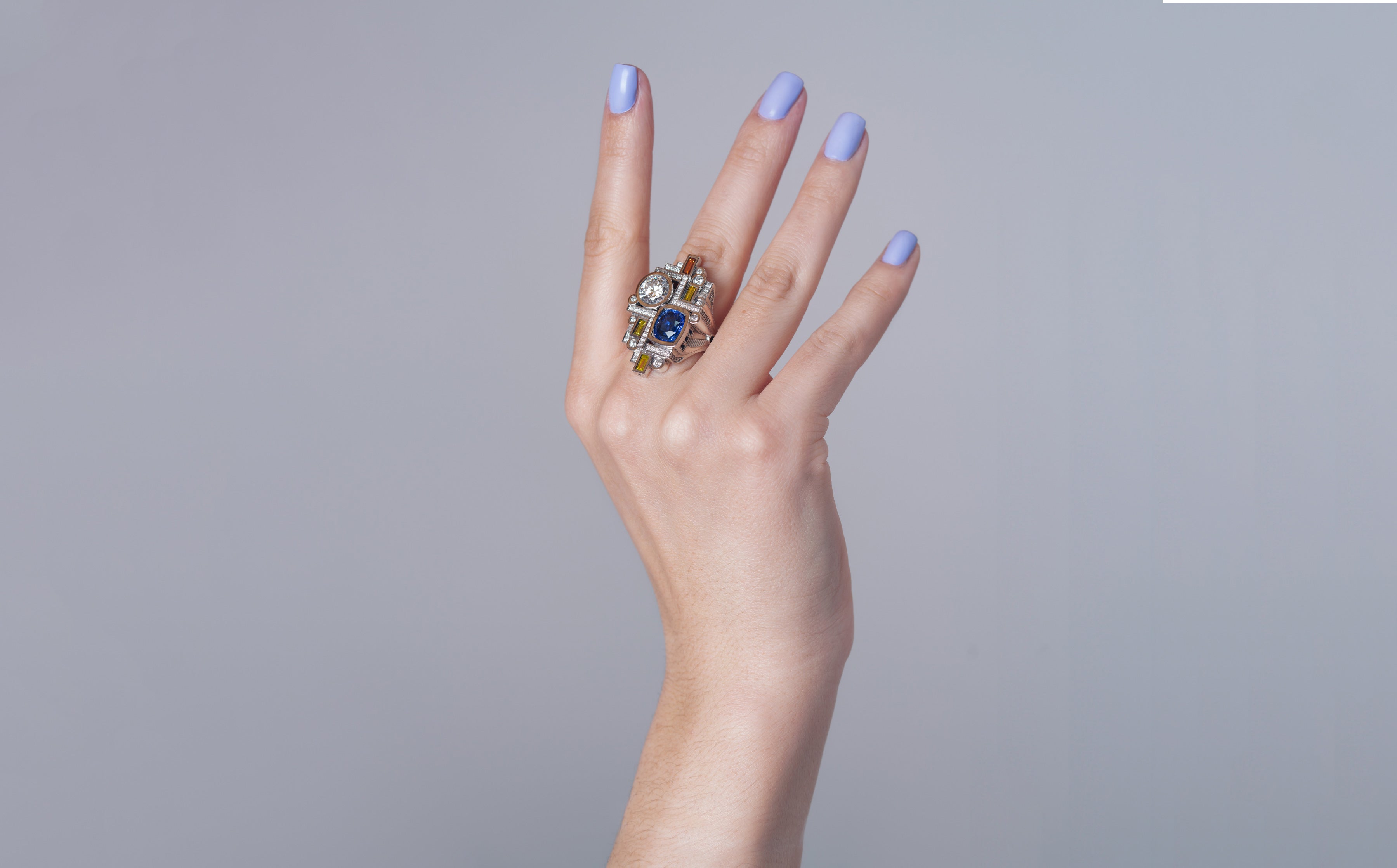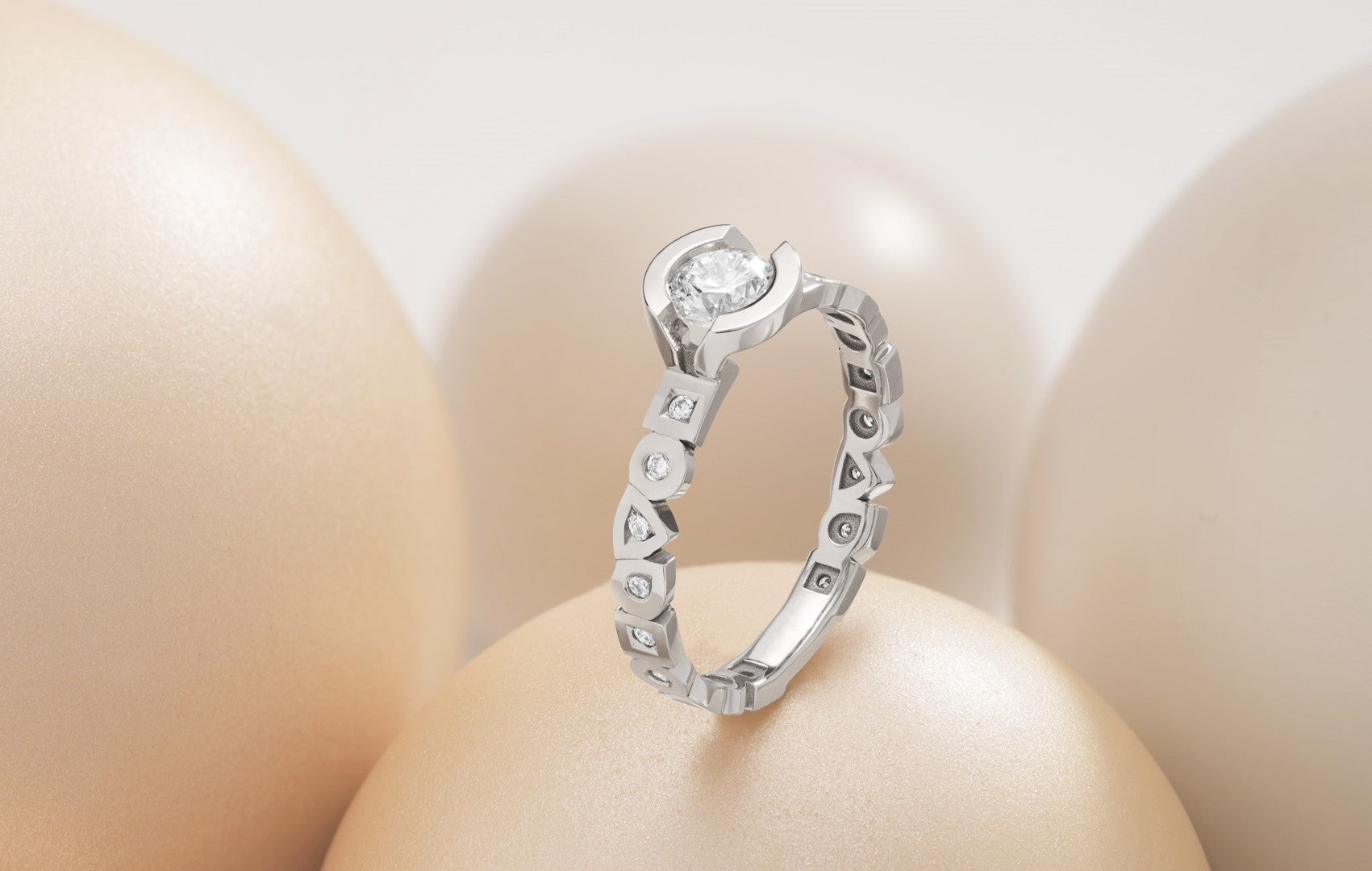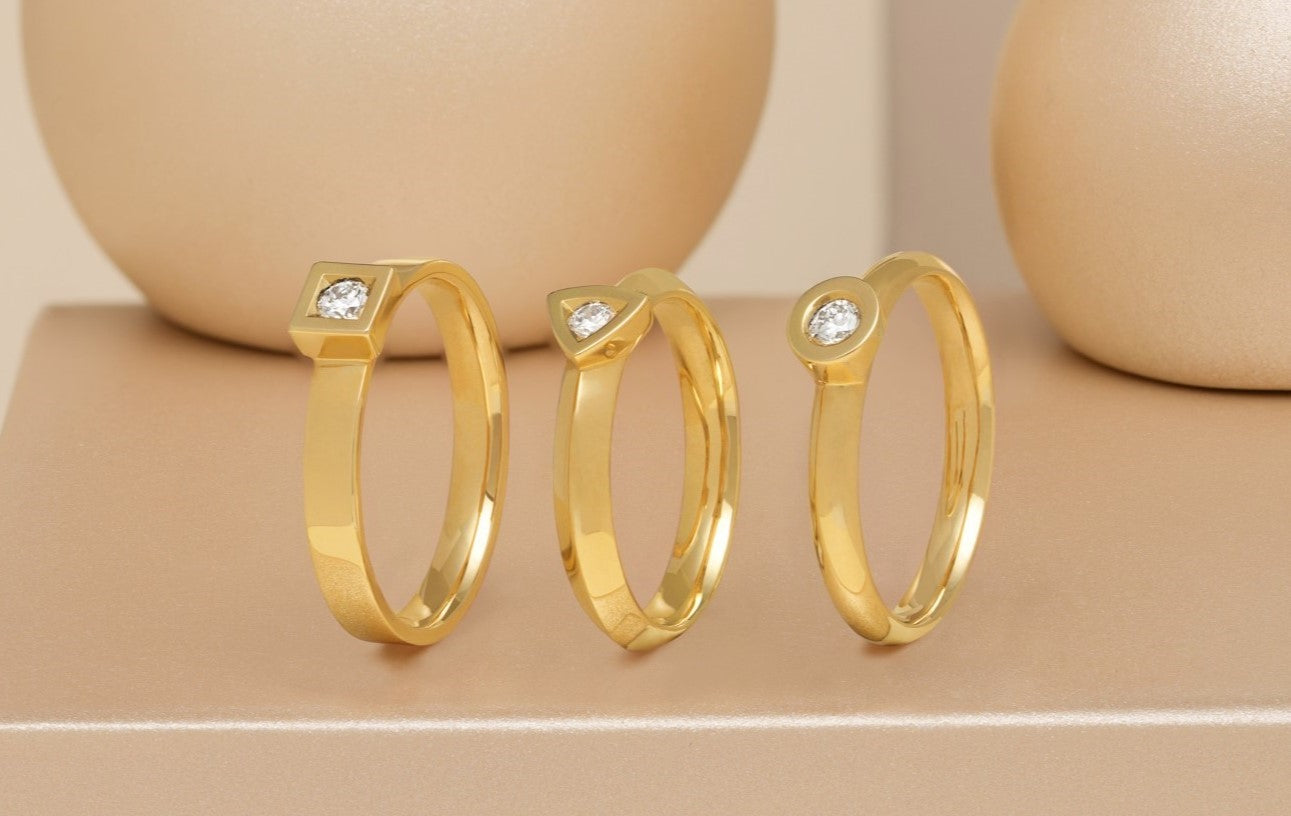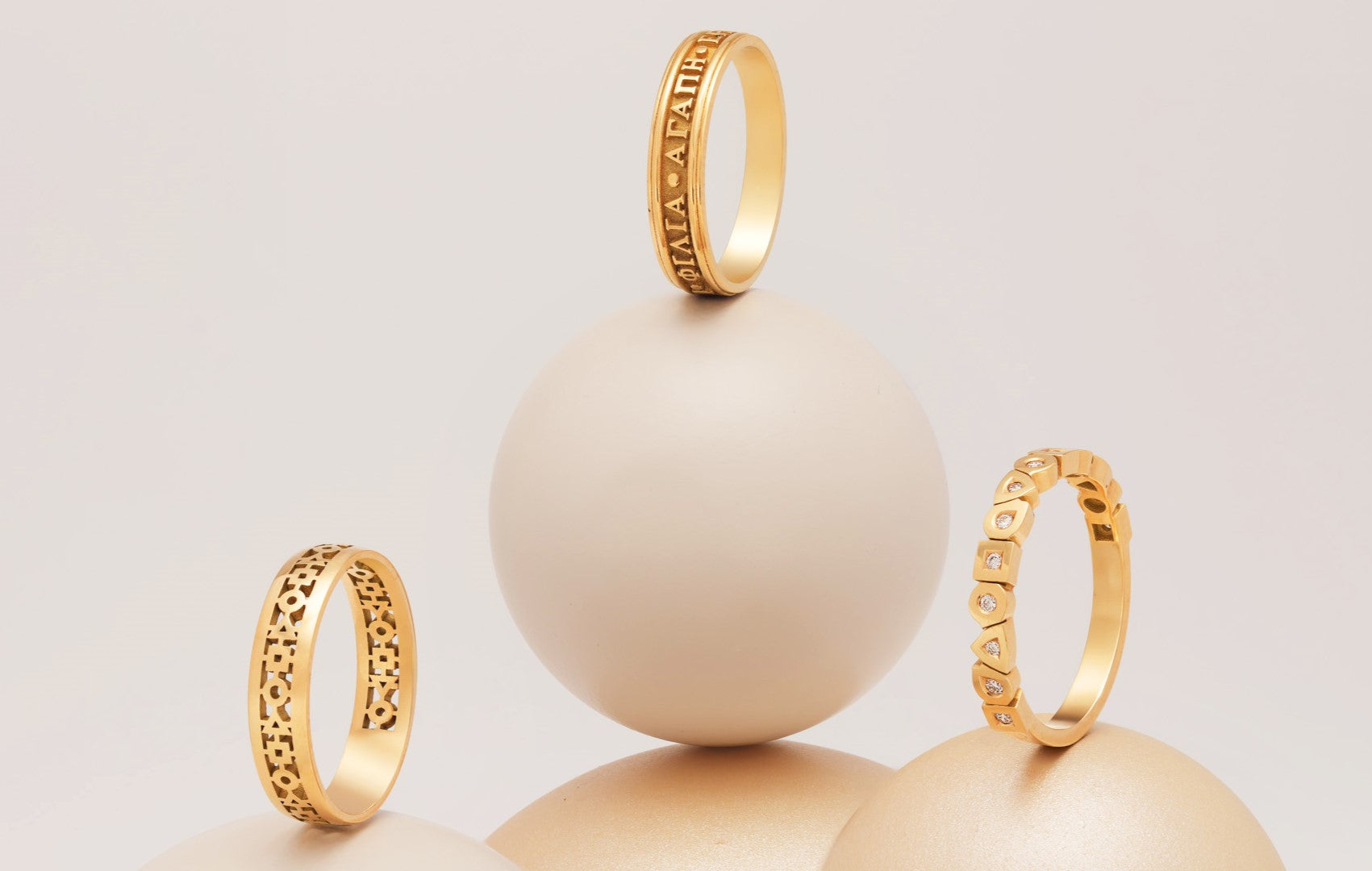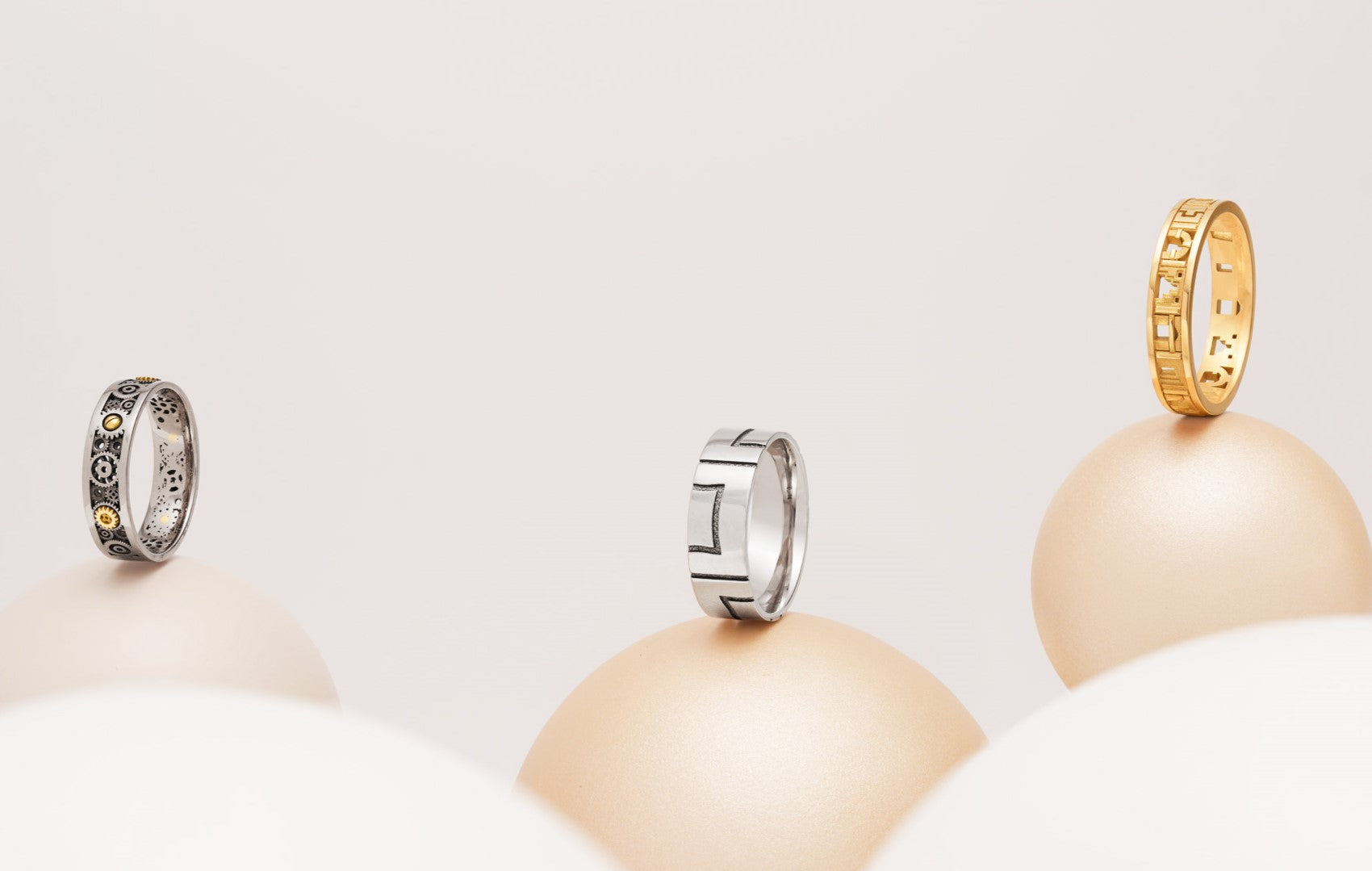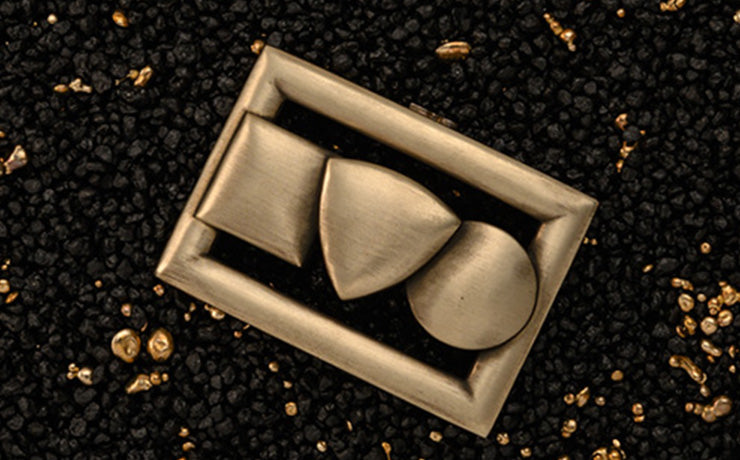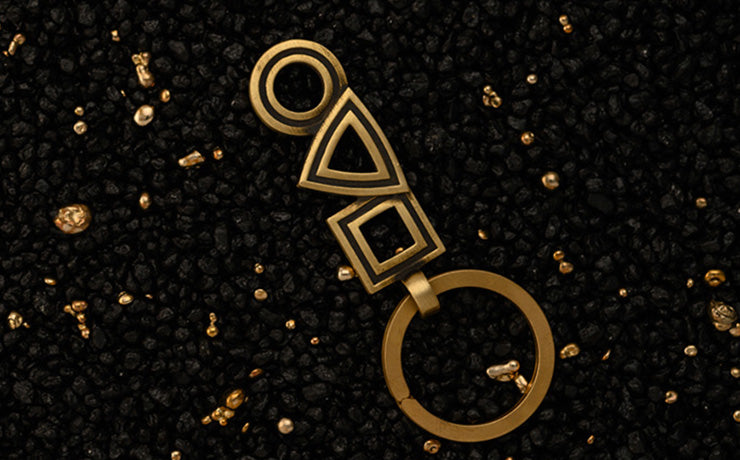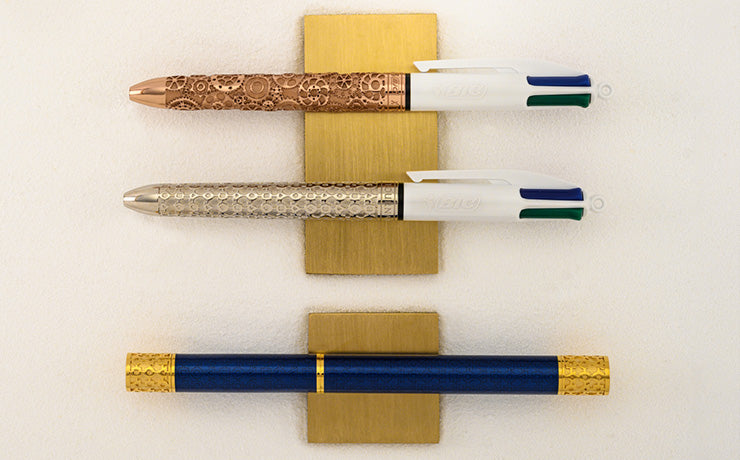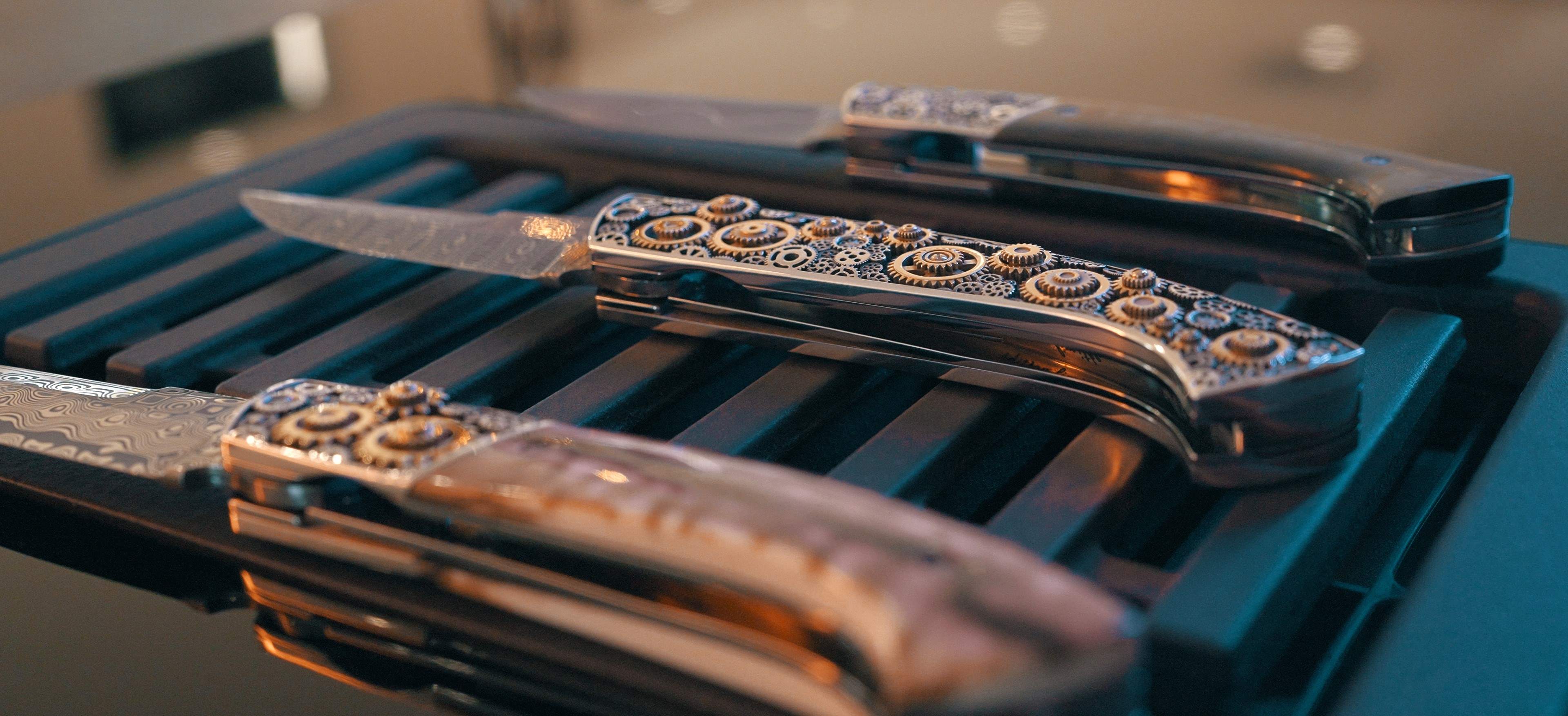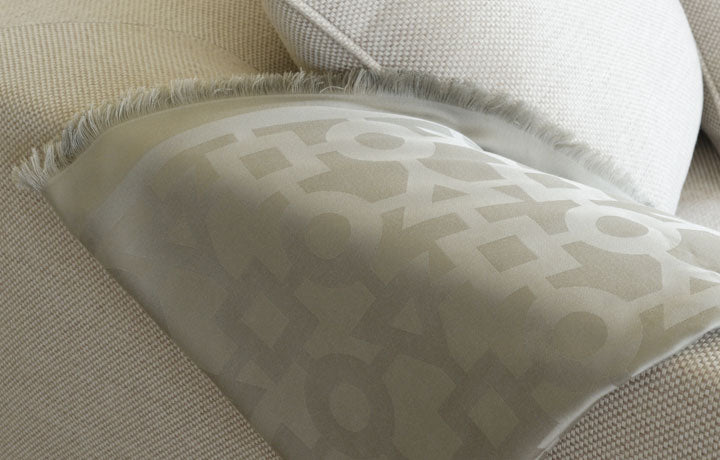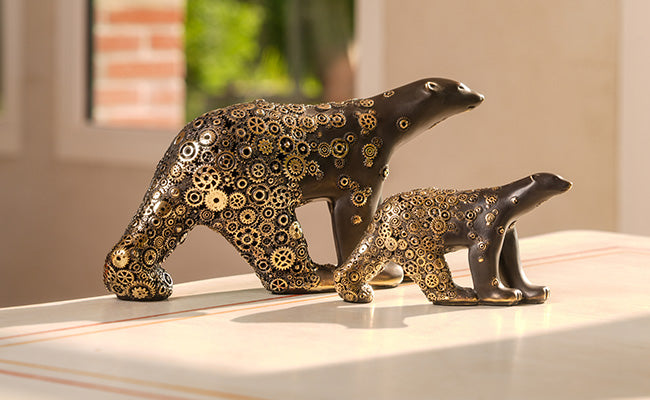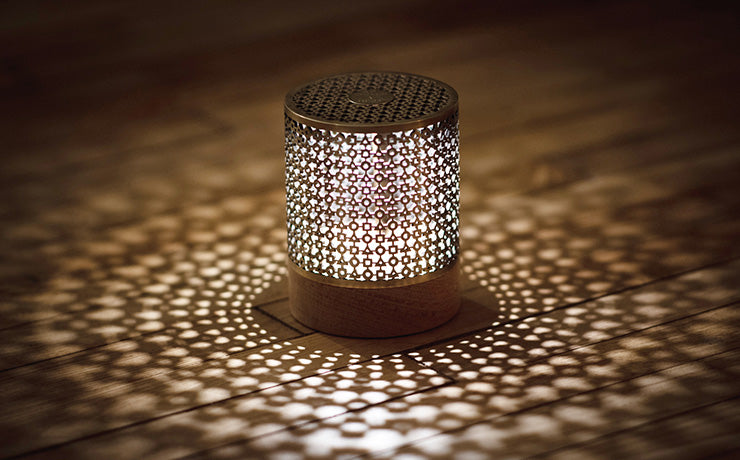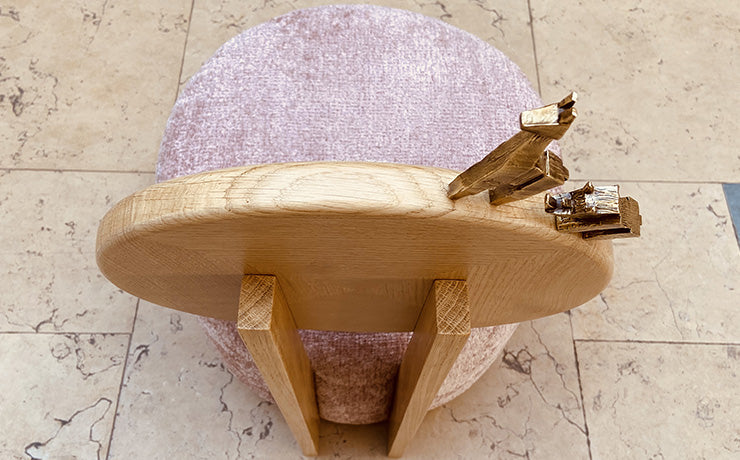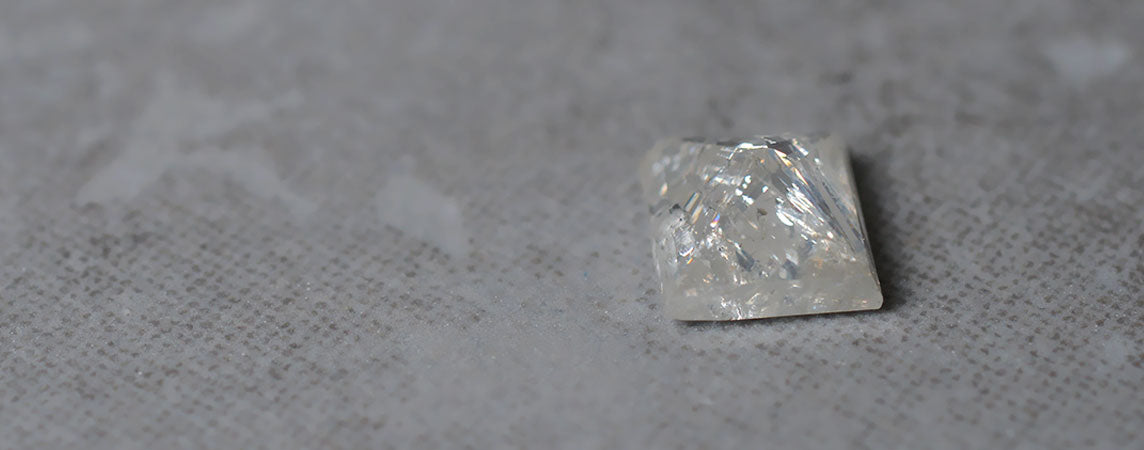
THE DIAMOND
The diamond
According to its ancient Greek name: adamas, it is "indomitable". Although most often appreciated for its clarity, brilliance and round brilliant cut, which reveals its intense fire, diamonds come in many shapes and forms.
Le diamant est depuis toujours symbole d’éternité, de pureté, de dureté et de rareté. Cette gemme sublime se décline sous de nombreuses couleurs et de nombreuses formes au caractère fort, qui se distinguent des diamants blancs à la beauté lisse. Comme toute pierre à énigmes, le diamant autrement éveille notre curiosité etnous ouvre les yeux sur le nombre infini de trésors qui nous entourent. Nous avons tous une manière bien à nous d’appréhender le beau et cet article a pour but d’ouvrir notre vision des beaux cailloux. On va alors s’apercevoir qu’un diamant peut nous offrir un spectacle haut en couleurs et en surprises, pour au final être beau, autrement.
Diamond data sheet
- Composition chimique : Le diamant comme on le connaît est une gemme qui une fois taillée, nous éblouit par sa brillance et par son feu. Mais un long cheminement se fait jusqu’à cette étape. Cette gemme est exclusivement composée de carbone, a la même composition chimique que le graphite, seulement la structure cristalline diffère : en effet les atomes dans un diamant sont très serrés les uns contre les autres, contrairement au graphite. C’est cet arrangement compact et régulier des atomes qui explique la dureté du diamant : sa résistance aux chocs et aux rayures. (Le diamant est à 10 sur l’échelle de Mohs, qui va de 1: talc, savon sec à 10). Bien qu’étant la matière la plus solide et la plus dure au monde, le diamant n’est pas incassable. -
- Structure cristalline: Comme le spinelle et les grenats, la structure cristalline du diamant est cubique. La forme brute la plus commune pour un diamant est l’octaèdre (2 pyramides accolées), cependant il est rare que les arêtes soient parfaitement symétriques.
- Sa formation : Les conditions requises pour la formation du diamant sont :
- Temperature between 900 and 1300 degrees - Pressure between 45 and 60 kilobars
- The right combination of these 2 elements (otherwise the diamond would turn into graphite on its journey to the Earth's surface)
- A carbon-rich environment These conditions exist in very specific places in the Earth's upper mantle, between 140 and 190 km below the surface, the most suitable place being ancient parts of the Earth's crust called cratons.
- Son âge : Le plus jeune diamant avait été découvert au Zaïre en 1995 et s’étaient formés il y a 628 millions d’années. Les plus vieux diamants qui ont été découverts s’étaient formés il y a de cela 3,3 milliards d’années.
Some other diamond shapes...
- La pyramide: Retour aux sources, à l’état de caillou, sans altération, sans intervention de l’homme. Philippe Tournaire utilise parfois des diamants bruts à la forme de double pyramide, tout simplement parce qu’au final, il n’y a parfois pas besoin d’essayer d’obtenir manuellement ce que la Nature sait si joliment faire toute seule. Les formes de diamants bruts sont parfois si incroyables et parfaites, qu’il n’y a rien à ajouter. Le Carrousel du Louvre de la Bague Paris Large est d’ailleurs représenté par une moitié de diamant brut, une « Pyramide ». La double pyramide n’est pas la seule forme que prend le diamant lorsqu’il sort du ventre de la Terre : il peut tout aussi bien s’apparenter à un cube, ou à d’autres formes similaires mais moins bien définies.
The crowned or "Dutch" rose
Les tailles en Rose font du diamant une pierre à énigmes. Cette taille apparue au XVIème siècle est fascinante car elle permet de donner un nouvel éclat au diamant. Elle doit ses contours aux diamants bruts aplatis et permet donc d’utiliser un maximum de leur potentiel. Les roses de diamant sont brillantes de par leurs facettes triangulaires qui convergent en un point. En d’autres termes, la rose couronnée est un cabochon à facettes.
- Le rond brillant: de nombreuses tailles ont précédé le fameux diamant rond brillant. Il y a des années, on privilégiait le calibre d’un diamant à son feu. Petit à petit, on s’est aperçu que les proportions jouaient un rôle fondamental dans la beauté d’un diamant. C’est en effet grâce à la combinaison de facettes taillées d’une façon bien précise que l’on peut obtenir un feu sans égal. On est passé de 8 facettes (octaèdre) à 58 facettes avec le rond brillant. Au fil du temps les techniques des diamantaires se sont donc perfectionnées. Avec l’arrivée de la taille rond brillant par le tailleur belge Tolkowsky en 1919, on est parvenu à concilier deux éléments essentiels : conserver un maximum de poids du diamant brut tout en obtenant une brillance optimale.
Philippe Tournaire utilise principalement des diamants ronds-brillants, qui peuvent être sertis dans des formes rondes, carrées, triangles, gouttes…Car c’est sous cette taille rond-brillant que les diamants ont un maximum d’éclat. Il aura fallu plus de 500 ans pour mettre au point la taille connue de tous aujourd’hui. Cette taille brillante donnera ensuite naissance à de nombreuses tailles fantaisies, telles que la poire, le cœur, la marquise (ou navette), la taille émeraude, triangulaire, princesse, ovale…Il n’en reste pas moins que la taille Rond Brillant est celle qui a le plus bel éclat au monde. D’autres diamants sont utilisés pour leur couleur particulière, donnée par des éléments considérés comme des défauts, mais qui au final donnent au diamant une beauté unique et parfois exceptionnelle. Ce sont dans ce cas les imperfections d’une gemme qui font tout son charme.
A diamond full of surprises, dressed in light
Même si les diamants abondent de par le monde et quand bien même Mère Nature est généreuse en matière de trésor que l’homme s’évertue à trouver, il est certain que les diamants de belles couleurs sont rares. Ces diamants sont atypiques et méritent d’être mis en lumière. Il est important de souligner que les diamants de couleur existent grâce à leurs impuretés, qui ont réussi à s’infiltrer dans la gemme lors de sa formation.
L’Institut de Gemmologie Américain GIA a inventé une échelle de couleur applicable pour les joailliers du monde entier. Cette échelle permet de déterminer les différents degrés de couleur pour un diamant. Elle va de D à Z, D faisant référence à Blanc Exceptionnel + et Z étant la couleur donnée à un diamant jaune clair. On peut alors penser que les lettres A, B et C sont réservées pour des diamants encore plus blancs que blancs, qu’un chanceux découvrira peut-être un jour ! Qui sait ce que la nature nous réserve ?
Au-delà de la lettre Z, nous passons à un tout autre registre de couleurs, cette fois-ci bien plus prononcées. Pour toutes les gemmes, ce sont les impuretés emprises lors de leur formation qui expliquent leur couleur. C’est alors que dans bien des cas, les inclusions – parfois même microscopiques - d’une gemme jouent finalement en sa faveur.
Among all the impure elements in existence, nitrogen, boron and hydrogen atoms make their way into the crystalline structure of our beloved diamond... It's no longer white: it becomes the other diamond. Sometimes very pretty, sometimes less so. It's up to us to select them. Nitrogen is the most common element responsible for color in gems. Boron is the least common, and is found only in blue-gray diamonds. Here are a few examples of famous diamonds with exceptional colors.
Jaune-brun
Les couleurs de diamant les plus répandues sont le brun et le jaune. Mais certains se démarquent des autres de par l’intensité de leur couleur : comme le diamant jaune-brun Eureka par exemple. Les diamants restent des cailloux que l’on ramasse encore de nos jours par terre. Le premier diamant à avoir été découvert en Afrique du Sud en 1867 illustre bien cette image : un jeune garçon jouant sur les rives de la rivière Orange (près de la Namibie) a trouvé un joli caillou. Il ne savait pas alors que sa découverte allait chambouler l’histoire du diamant…Il jouait aux osselets avec sa nouvelle trouvaille, en toute insouciance. Puis le caillou passa entre des mains expertes et fut identifié en tant que diamant de 21,25 Cts, de couleur jaune teinté de brun et fut baptisé Eureka.
Bleu, vert
Les diamants bleus, verts sont aussi rares. Deux exemples célèbres sont le Hope d’un bleu intense, le Dresde Vert. Le Hope est un diamant bleu intense qui a été découvert en Inde au 17ème et pèse aujourd’hui 45,5 cts. Il a longtemps été associé à des malédictions, du fait que bon nombre de ses acquéreurs ont eu une fin tragique. Il est depuis 1958 en exposition au Smithsonian Institute Of Washington, où les curieux du monde entier peuvent l’admirer. Sa couleur est en grande partie due à la présence de l’hydrogène. Le Dresde Vert a été découvert au début du 18ème en Inde et pèse 40,70 cts. Il est unique dans le sens ou la couleur verte qui le sublime est très uniformément distribuée, à l’inverse des diamants verts habituels avec des zones de couleurs. Les diamants verts sont une curiosité. Leur couleur est due à une irradiation naturelle. Il est dit que le Dresde Vert et le Hope sont très liés de par leur poids, leur importance dans l’histoire des gemmes, l’intensité de leur couleur et leur rareté. Ils ont d’ailleurs été exposés ensemble au Smithsonian Institute of Washington fin 2000. Il séjourne désormais au Musée Albertinum de Dresde, capitale de la Saxe en Allemagne.
Rose, orange et rouge
La mine Argyle en Australie produit la majorité des diamants roses à l’échelle mondiale. Un bel exemple est le diamant roses, pêche Hortensia. Il pèse 20,53 cts. D’abord partie intégrante des joyaux de la couronne française, il est désormais en exposition au Musée du Louvre. Les diamants orange et rouge sont si rares que les scientifiques ne sont pas sûrs de la cause exacte de cette extraordinaire couleur. Mais il y a beaucoup de chances pour que ce soit le résultat d’une combinaison d’atomes autres que le carbone et d’anomalie structurelle. Le Jubilé d’Or est considéré comme le plus gros diamant orange taillé au monde. Il pèse 545,67 cts, a été découvert en Afrique du Sud en 1985. Il est taillé en forme de coussin à 148 facettes. Il se trouve désormais sur le spectre de la famille royale de Thaïlande. Le Moussaief rouge: de taille triangulaire, ce superbe diamant rouge a été découvert au milieu des années 1990 au Brésil. Il pèse 5,11 cts. Il a été trouvé par un fermier brésilien et est ensuite arrivé dans les mains du joaillier américain Moussaief, d’où son nom.
Noir
Les diamants noirs dits « Carbonados » doivent leur couleur à des minéraux tels que l’hématite et la magnétite qui font partie intégrante de leur structure cristalline. On les trouve principalement en République d’Afrique Centrale et au Brésil. Le diamant « Black Orloff » a contribué à faire connaître et apprécier les diamants noirs. (Pour la petite histoire : il a été découvert au 18ème en Inde et appartient désormais à un riche collectionneur. Il pèse 67,5 Cts) Le monde regorge de merveilles à découvrir encore et toujours, parfois d’un œil différent de celui avec lequel on nous a appris à regarder. « Les diamants Autrement » comme leur nom l’indique, nous permettent d’adopter une vision plus élargie face à la beauté de ce que la nature a à nous offrir. A travers un atelier dédié à cette gemme sans égal, Philippe Tournaire vous offre l’opportunité de voir et d’apprivoiser ces trésors du monde à l’état pur, ou sublimés par des mains de maître.
Laissez place à votre imagination et à vos rêves en pensant les diamants autrement !
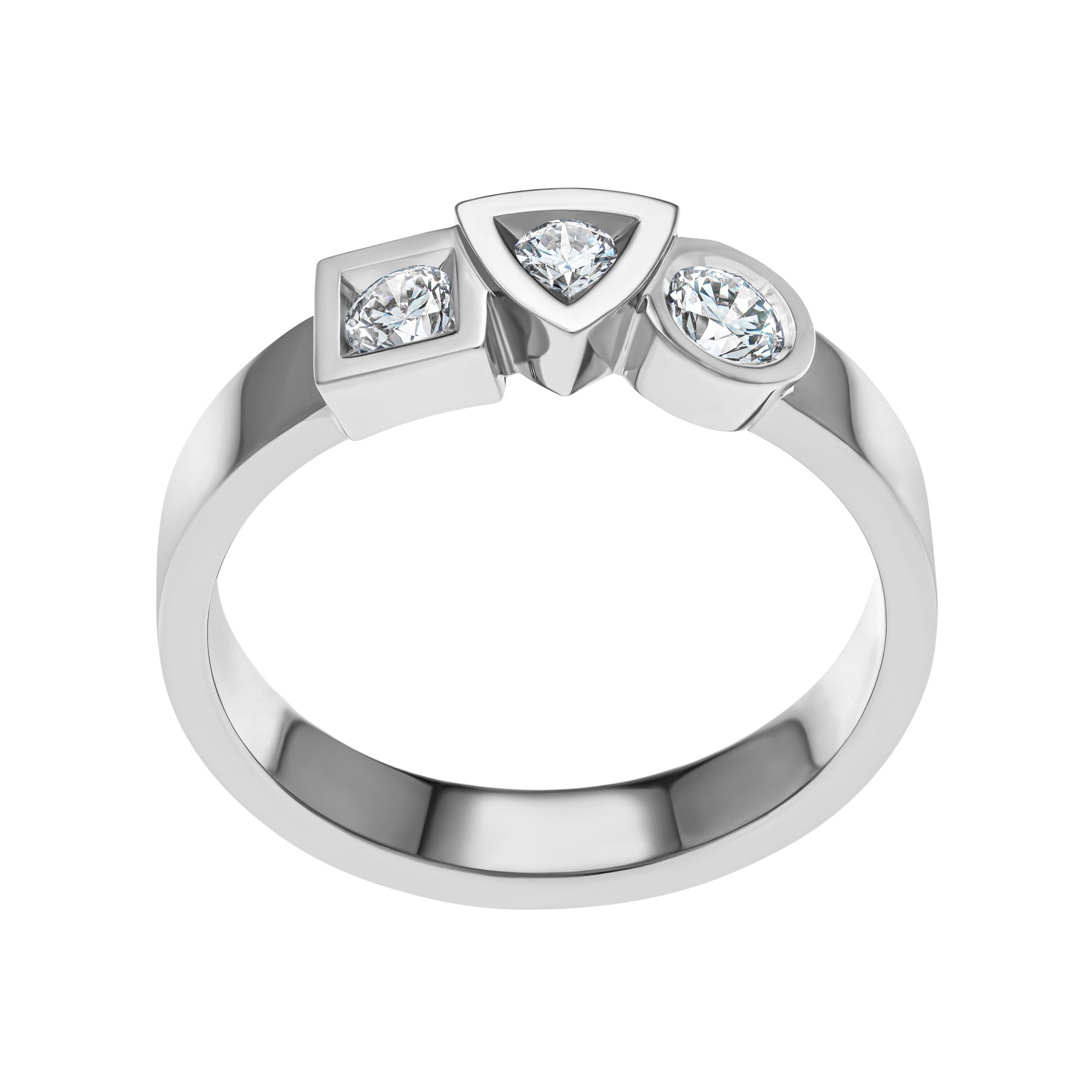
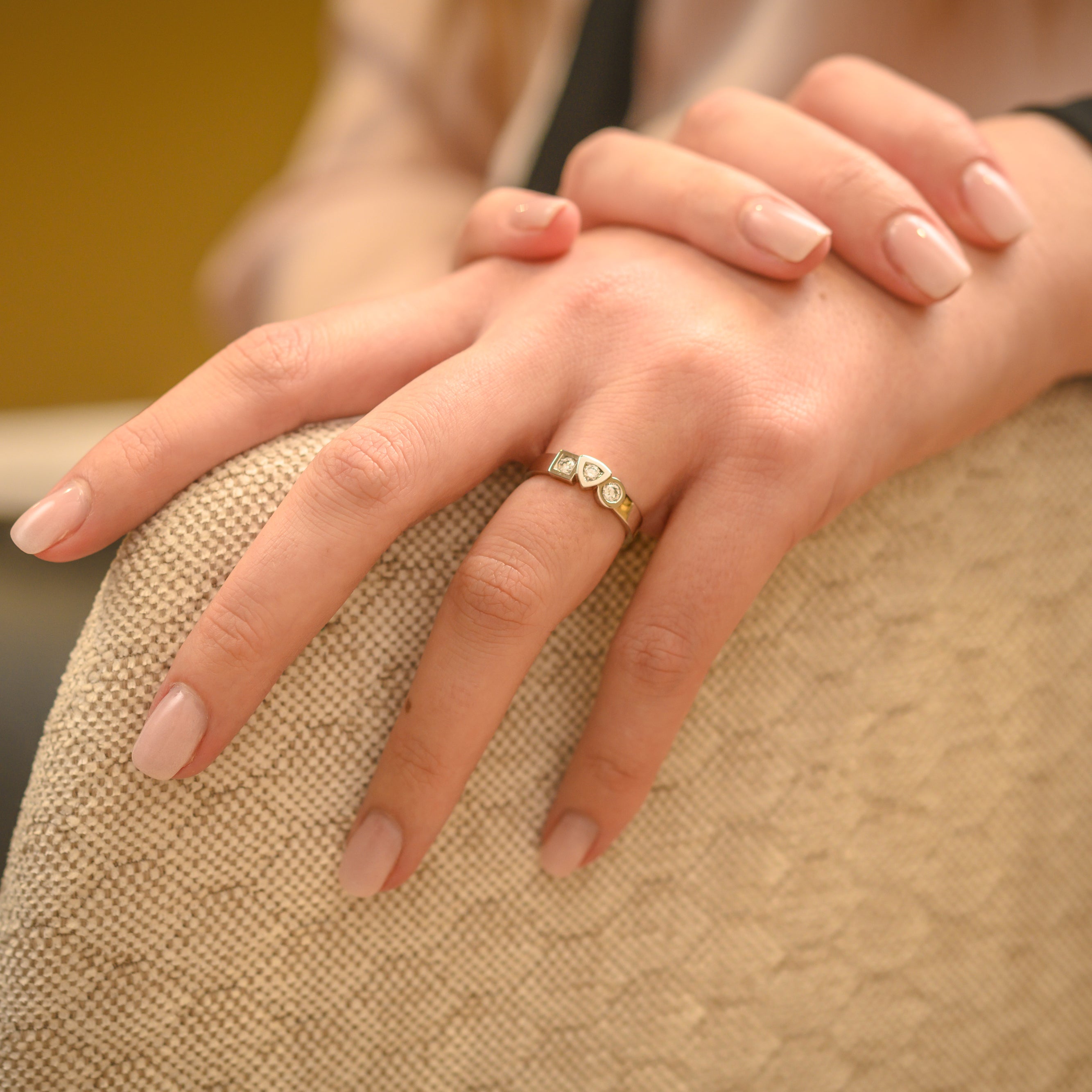
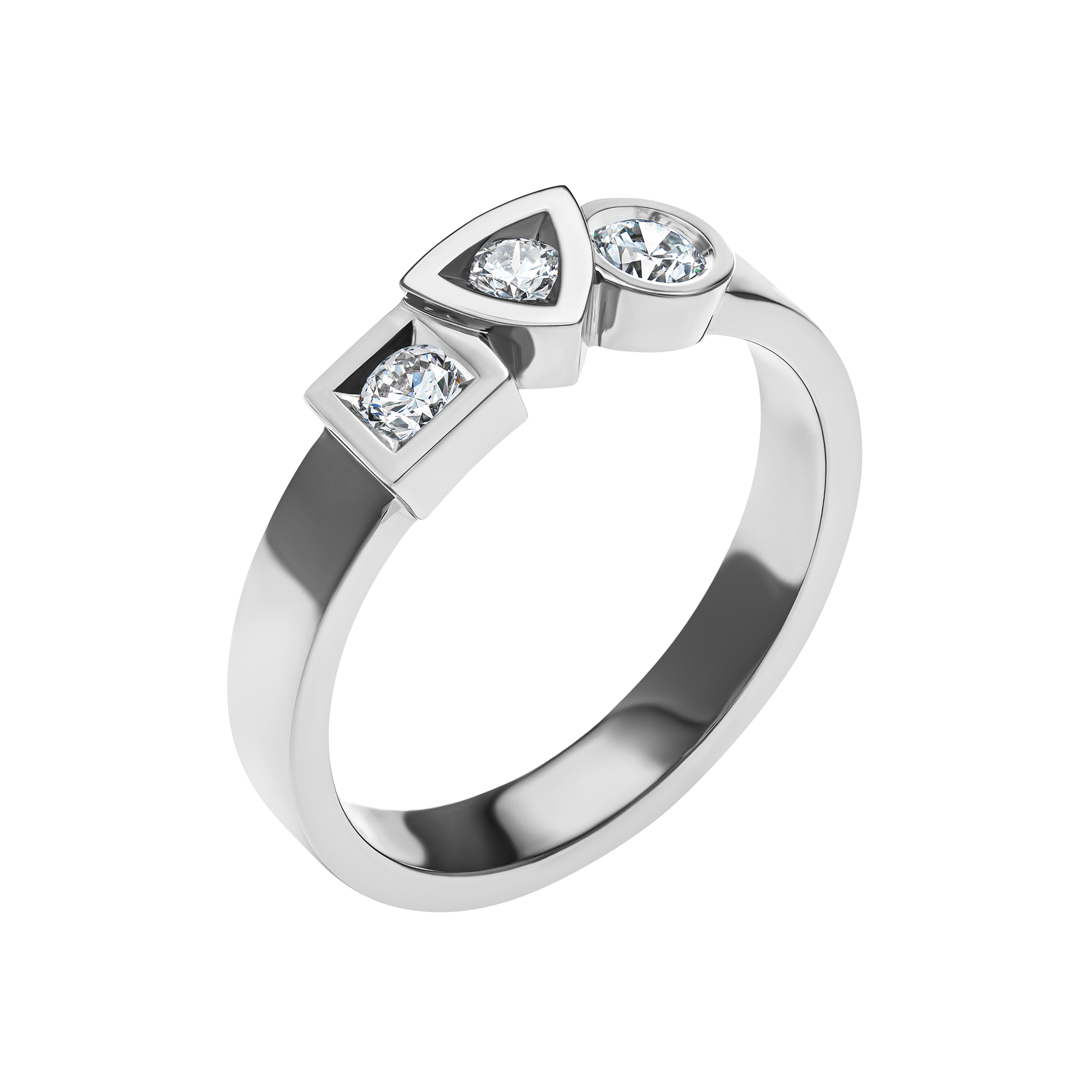
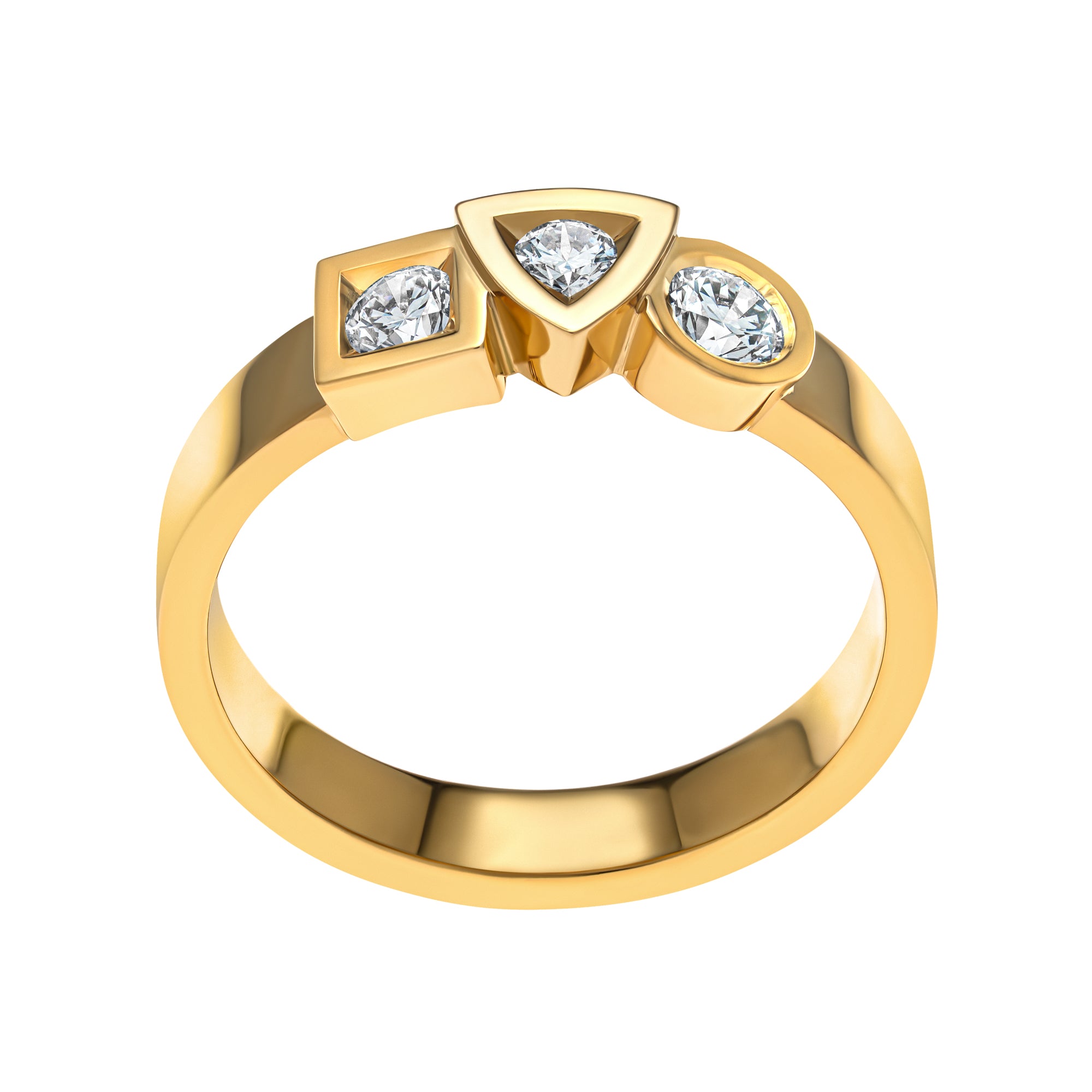
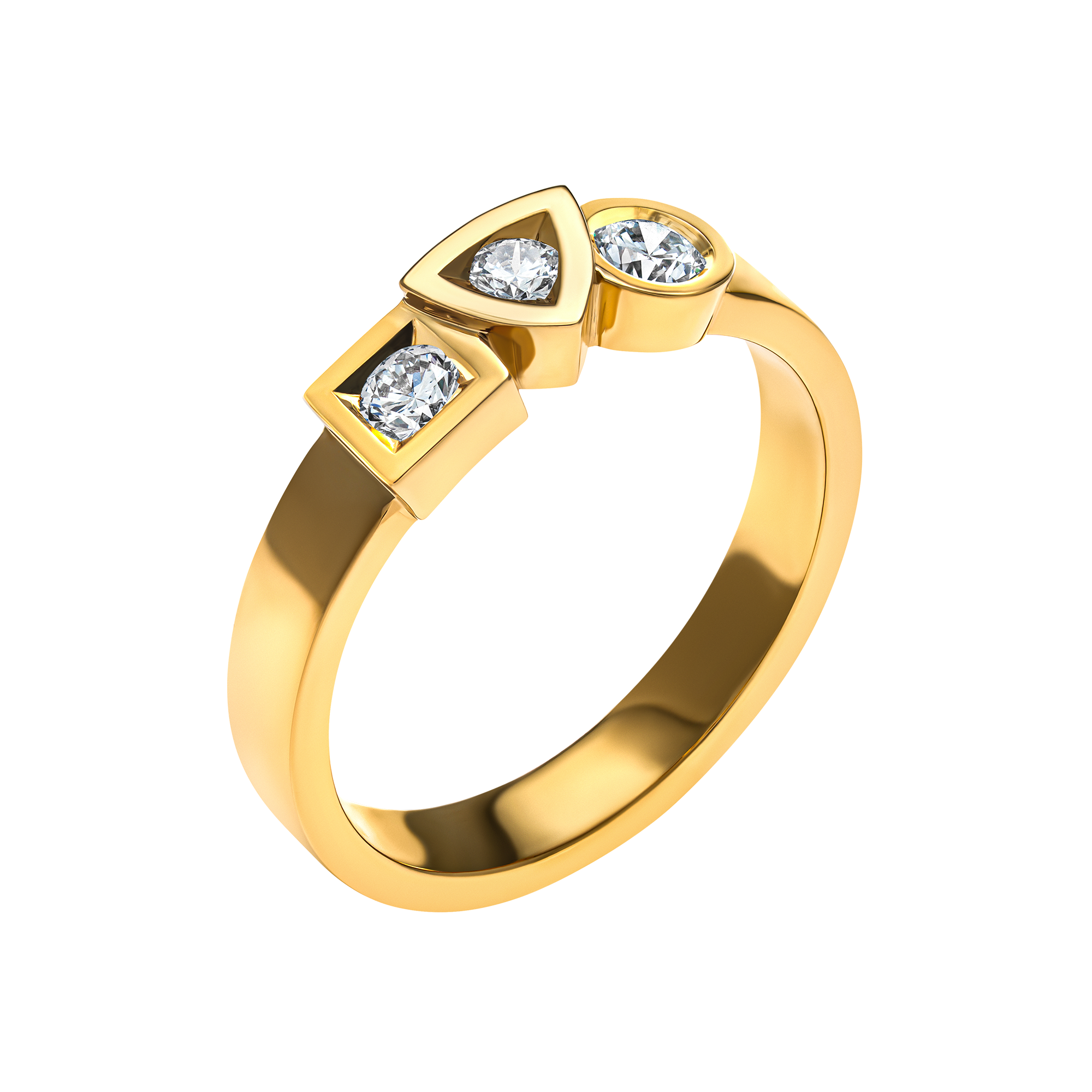
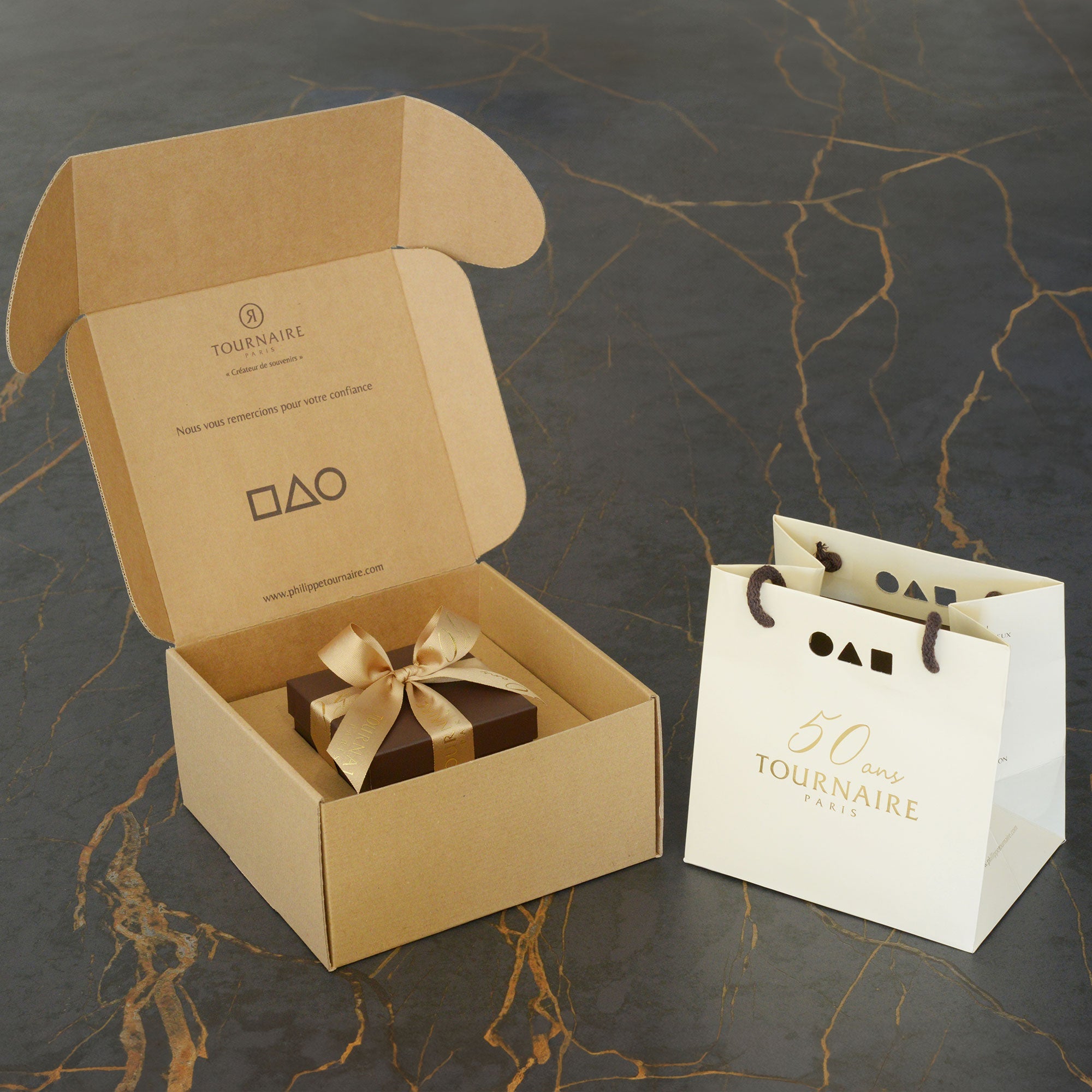
The guarantee of uncompromising craftsmanship
Our titles and labels




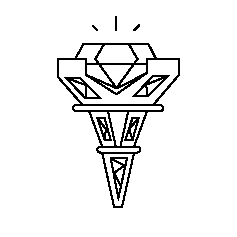
Made in France
Made in our workshop

100% secure payment
3x free of charge possible

Free delivery & returns
100% secure and free
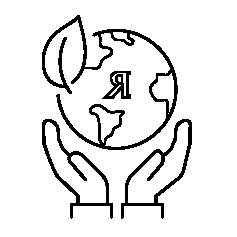
Jewellery committed
Ethical and responsible jewelry

